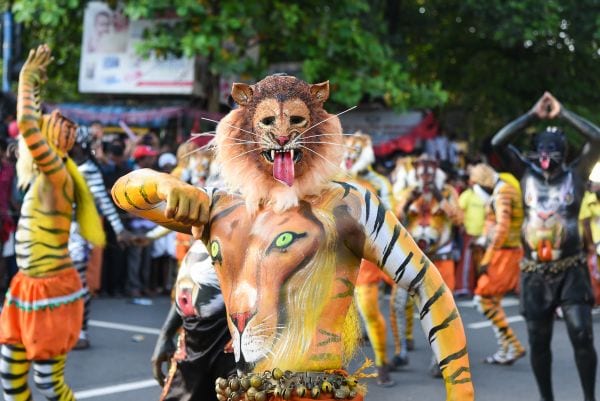This Onam, witness Kerala in all its glory!
It’s the time when, after the monsoons, nature looks radiant in her fresh green garb. It is also the season of plenty when the fields are harvested, the cellars are full, and even the air takes on a festive feel with a gentle, soothing breeze laden with the sweet smell of flowers. Onam is not just the biggest festival of Kerala, but also the most colourful and the most extravagant. It’s the festival of homecomings, a tribute to peace and harmony, and a celebration of the true spirit of God’s Own Country.
The legend of Onam
The legend of Onam evokes nostalgic memories of an era of peace and prosperity. An era ruled by the great king Mahabali or Maveli. It is believed that under his reign, peace and happiness ruled the lives of men. Mahabali’s growing power and popularity made the gods envious and they feared that humans would attain godliness. To destroy Mahabali’s supremacy on earth, Lord Vishnu in the guise of a dwarf, Vamana, approached Mahabali and requested three paces of land to which the King agreed. The dwarf then assumed his full capacity and with his first step took the celestial world, and the world of the demons in his second. Mahabali pleaded with Vamana to take his final step over him in order to spare the earth and surrendered his life. However, the gods granted him his last wish to visit his land for one day each year. Onam commemorates the annual return of Mahabali.
Saying it with flowers
Elaborate festivities mark Onam that starts formally on the day of the Atham asterism and goes on for ten days. A key highlight of the Onam celebration is the Athapookalam or floral carpets that adorn the frontyard of homes to give king Mahabali a glorious welcome.
A feast fit for kings
Onasadya, the traditional feast is another important part of the Onam celebrations. Served on a plantain leaf, the Sadya is a sumptuous spread of vegetarian delights and rice, along with payasams – a sweet porridge garnished with dried fruits and nuts. The popular saying ‘Kanam vittum Onam Unnanam’; (which loosely translates as ‘One must have the Onam lunch even if he is forced to sell his property’) says much about the importance of sadya. Today, almost all the resorts and hotels offer tourists a rich and delicious sampling of the Onasadya.
A splendid spectacle
Another not-to-be-missed Onam festivity is the Thripunithura Athachamayam, a splendid procession that marks the beginning of the Onam festivities. Celebrated with a lot of fanfare on the day of Atham at Thripunithura in Ernakulam district, the highlights of the event are folk dance performances, dance recitals by renowned artists, musical ensembles and caparisoned elephants. (August 15, 2018)
Grand Prix on the Great Backwaters
The most fascinating and vibrant of the Onam celebrations is the Vallamkali or Snake boat races. Scores of snake boats, manned by 100-125 oarsmen, participate in this event, regarded as the largest team sport in the world. Visitors can go to the backwaters of Alappuzha to witness the spectacular Nehru Trophy Boat Race. This year it was held on August 11, 2018.
Onam Week Celebrations in the capital
Though celebrations are held across the state during Onam, the Tourism Week Celebrations held in the capital city of Thiruvananthapuram by Kerala Tourism is the biggest and most colourful. A wide range of programmes including food festivals and art festivals are held during the week that concludes with a grand procession. (August 24-30, 2018)
Tiger, tiger burning bright
A common sight during Onam is the Pulikali, a 200-year-old folk art performed by trained artists. The dancers, painted from head to toe to resemble feisty tigers, indulge in a cat-and-mouse session with gun-wielding hunters, in rhythmic steps, to the music of ethnic drums such as thakil and udukku. Take part in the Pulikali in the Swaraj Grounds, Thrissur, and get ready for the wild side of Onam (August 28, 2018).

